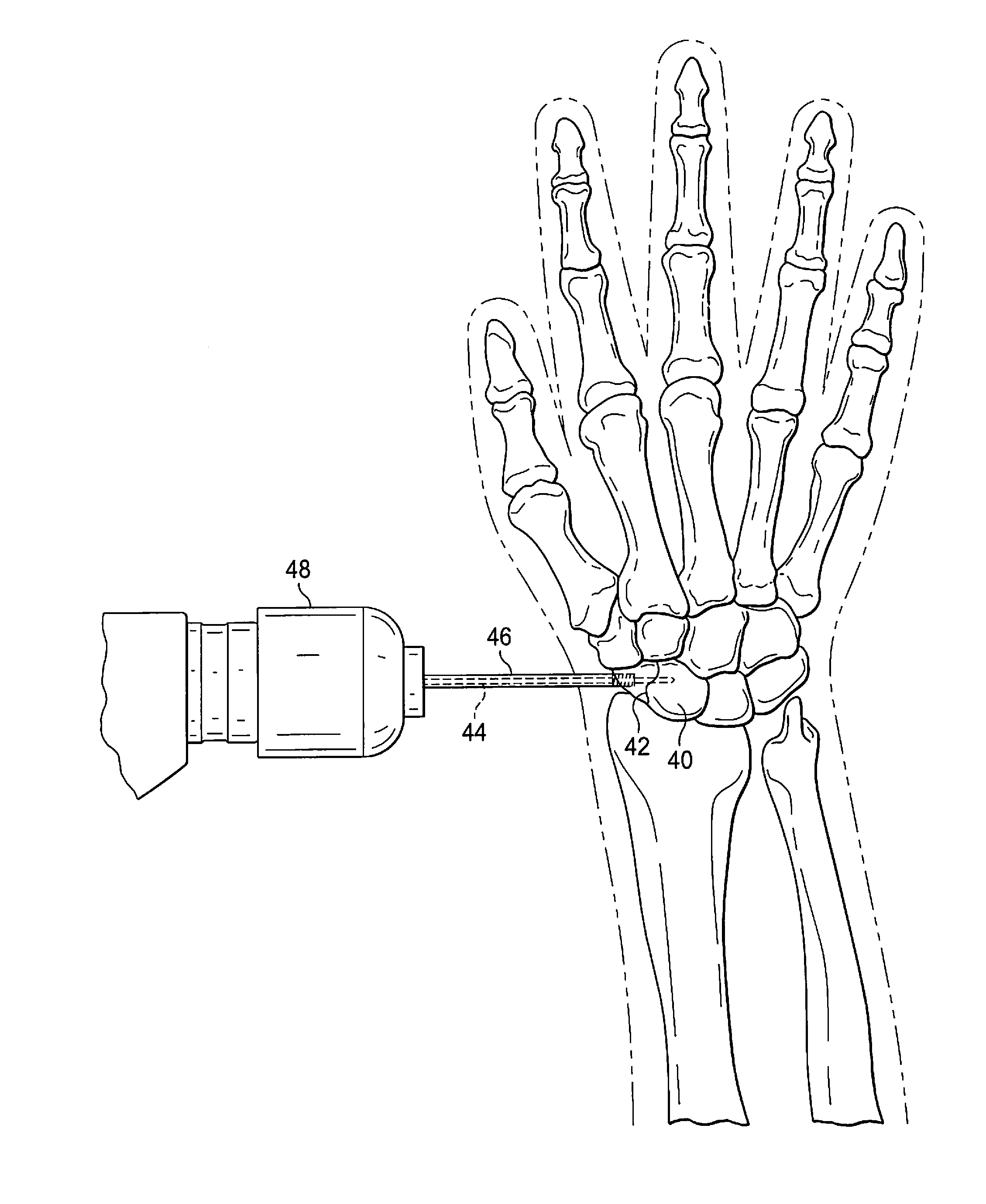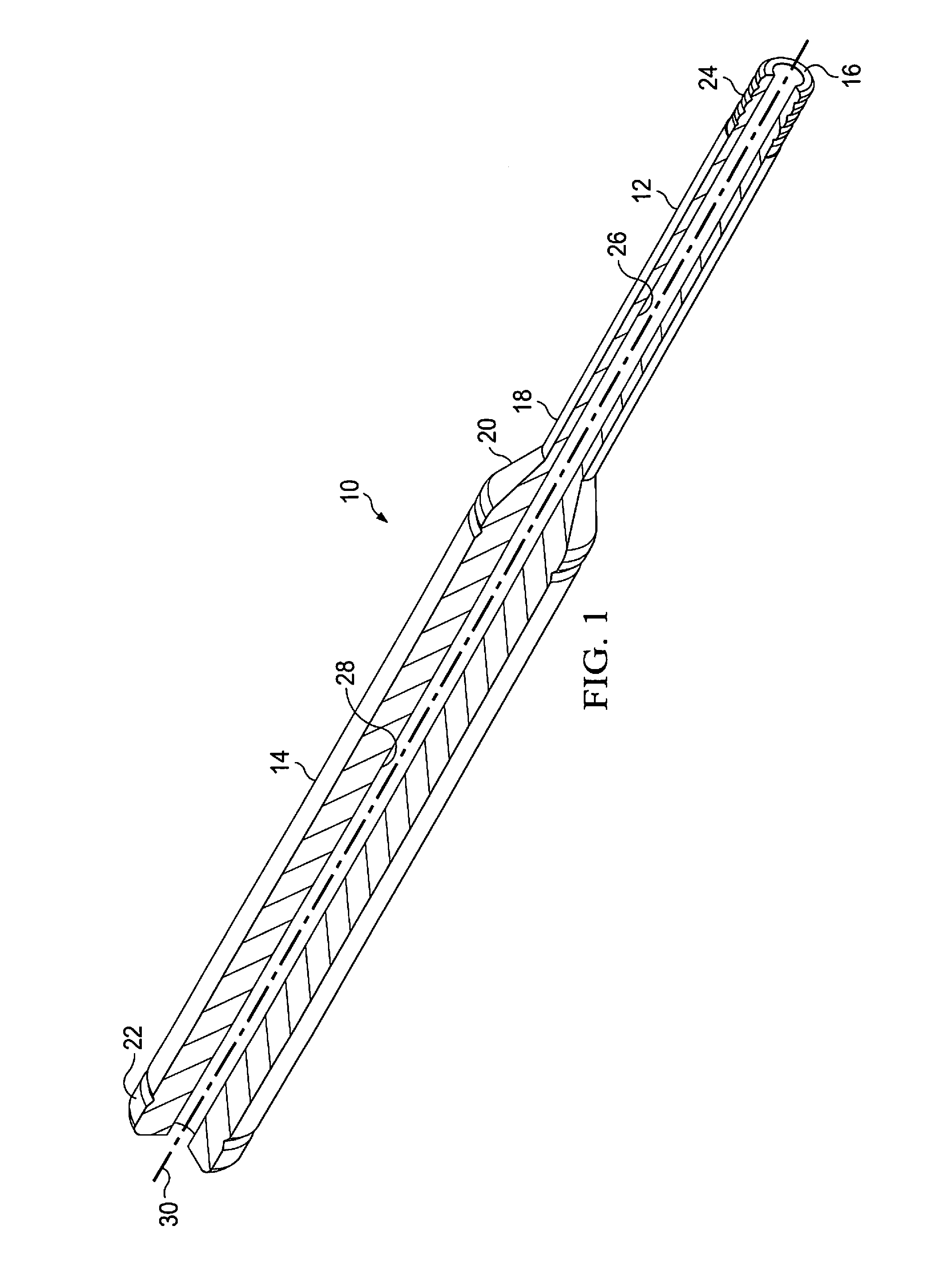Percutaneous exchange tube and method of use
- Summary
- Abstract
- Description
- Claims
- Application Information
AI Technical Summary
Benefits of technology
Problems solved by technology
Method used
Image
Examples
Embodiment Construction
[0014]Referring to FIG. 1, the apparatus of the present invention, also referred to as a percutaneous exchange tube 10 or exchange tube 10, comprises a first portion 12 and a second portion 14. First portion 12 includes a first end 16 and a second end 18, and second portion 14 includes a first end 20 and a second end 22. First portion 12 is attached or connected to second portion 14. Second portion 14 has a slightly larger outer diameter, permitting the surgeon to more easily grasp the instrument. First end 16 of portion 12 has a threaded portion 24. First portion 12 and second portion 14 each include a hollow elongated section 26 and 28, respectively, which extend along the longitudinal axis 30 of first portion 12 and second portion 14. Once manufactured as a single unit or first and second portions 12 and 14 are attached in a permanent manner, hollow section 26 is coaxially aligned with hollow section 28, providing a uniform inner diameter.
[0015]Exchange tube 10 is intended to be ...
PUM
 Login to View More
Login to View More Abstract
Description
Claims
Application Information
 Login to View More
Login to View More - R&D
- Intellectual Property
- Life Sciences
- Materials
- Tech Scout
- Unparalleled Data Quality
- Higher Quality Content
- 60% Fewer Hallucinations
Browse by: Latest US Patents, China's latest patents, Technical Efficacy Thesaurus, Application Domain, Technology Topic, Popular Technical Reports.
© 2025 PatSnap. All rights reserved.Legal|Privacy policy|Modern Slavery Act Transparency Statement|Sitemap|About US| Contact US: help@patsnap.com



